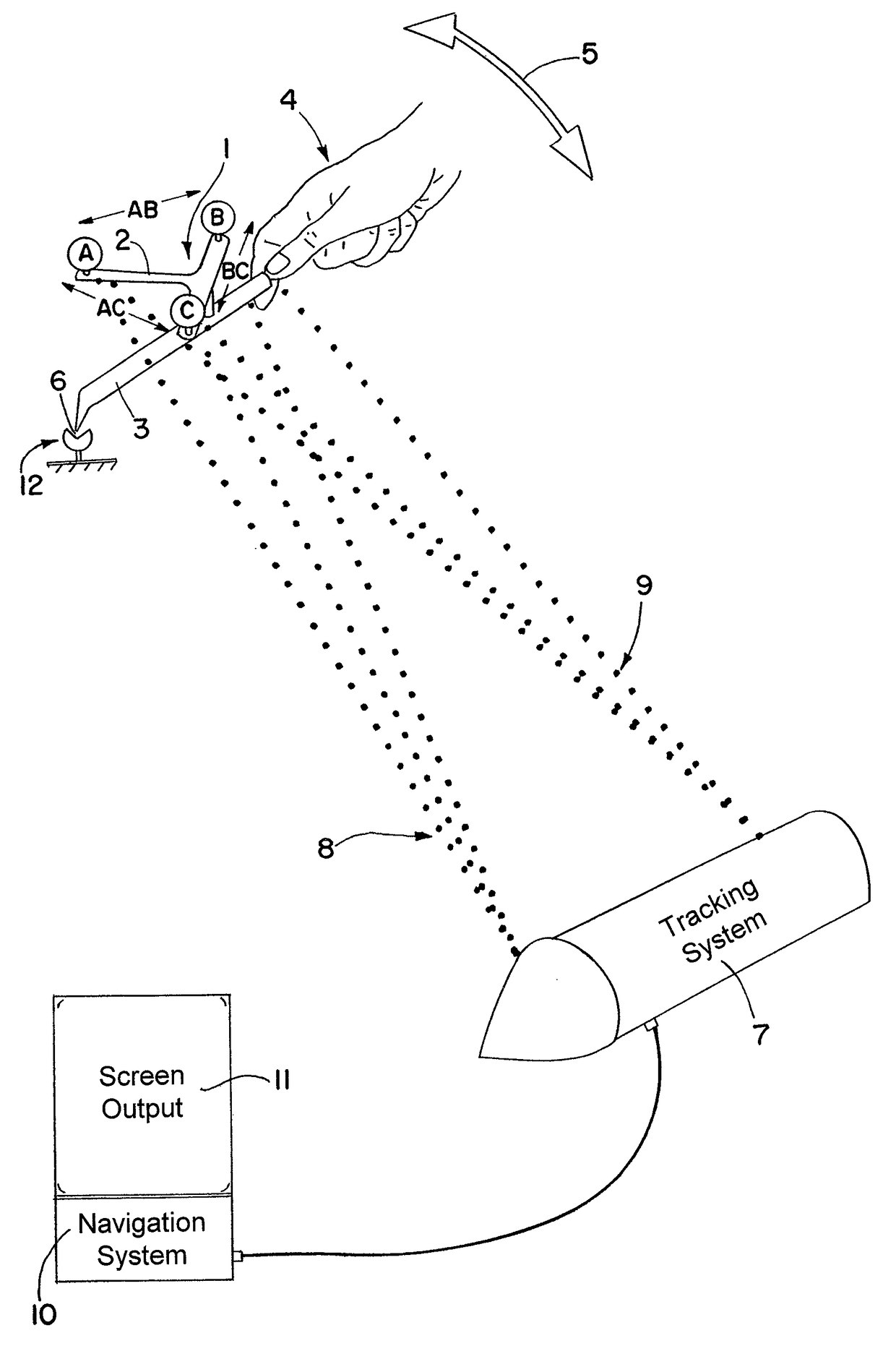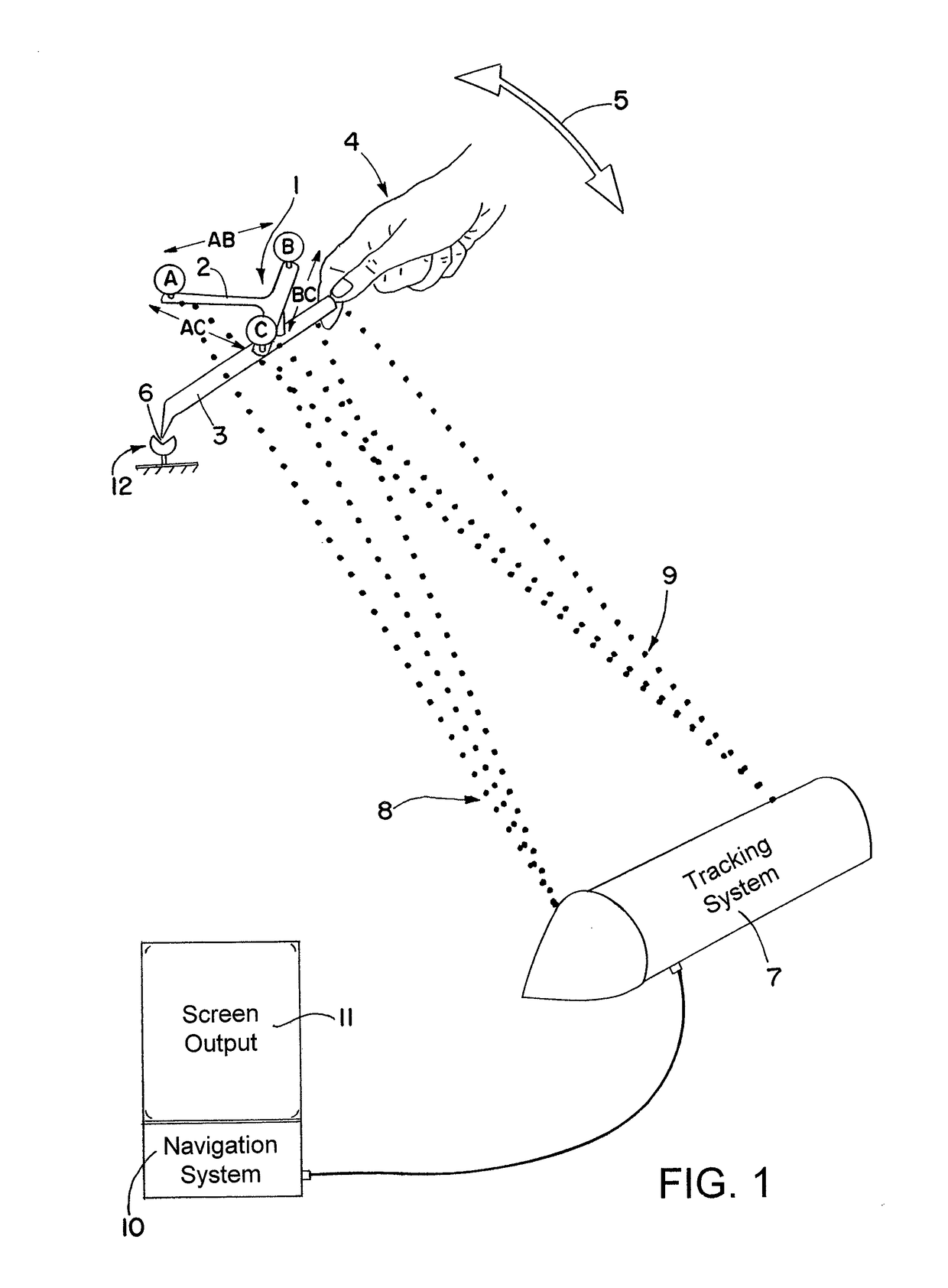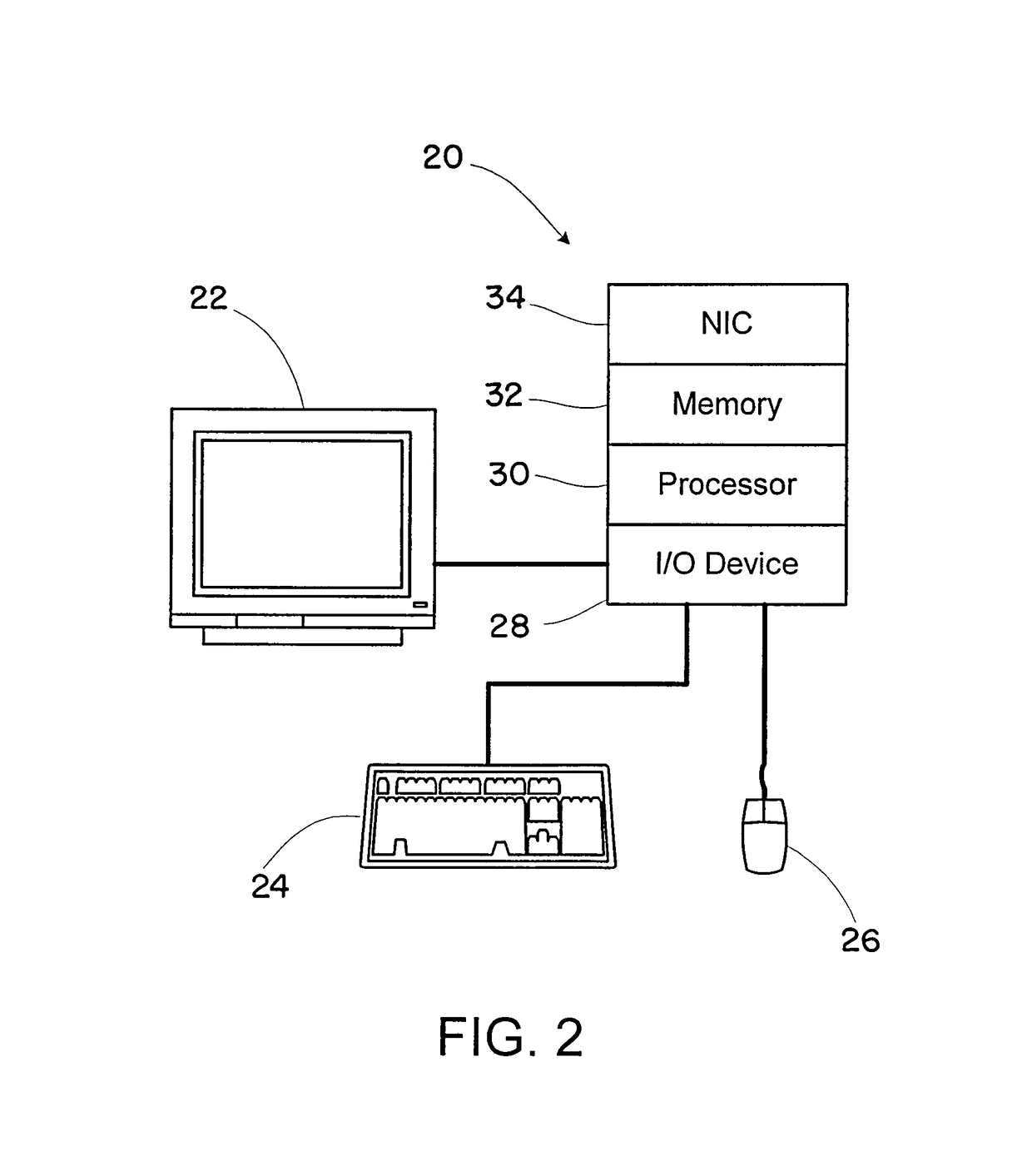Method for automatically identifying instruments during medical navigation
a technology for automatically identifying instruments and medical navigation, applied in medical science, surgical navigation systems, sensors, etc., can solve the problems of inaccurate production and cost-effective use of instruments provided with marker elements, and achieve the effect of avoiding errors
- Summary
- Abstract
- Description
- Claims
- Application Information
AI Technical Summary
Benefits of technology
Problems solved by technology
Method used
Image
Examples
Embodiment Construction
[0024]FIG. 1 illustrates an exemplary rigid body that includes marker elements, wherein the rigid body is identified by means of a navigation and / or tracking system. More specifically, the marker elements A, B, and C may be arranged on a reference array 1 via arms 2 and attached to an instrument 3, wherein the rigid body may be identified by moving the instrument 3 within the working range of the navigation system 10 and / or tracking system 7. While an optical tracking is shown, other tracking systems may be utilized, including, for example, ultrasound, magnetic or laser tracking and navigation systems.
[0025]The instrument 3 comprises a tip 6, and a spatial arrangement of the marker elements A, B, and C on the reference array 1 is fixed, such that the distances AB, AC and BC of the three marker elements form a rigid body and / or rigid marker body geometry. The distances AB, AC and BC can be detected by the tracking system 7, which can operate stereoscopically, i.e., using two cameras ...
PUM
 Login to View More
Login to View More Abstract
Description
Claims
Application Information
 Login to View More
Login to View More - R&D
- Intellectual Property
- Life Sciences
- Materials
- Tech Scout
- Unparalleled Data Quality
- Higher Quality Content
- 60% Fewer Hallucinations
Browse by: Latest US Patents, China's latest patents, Technical Efficacy Thesaurus, Application Domain, Technology Topic, Popular Technical Reports.
© 2025 PatSnap. All rights reserved.Legal|Privacy policy|Modern Slavery Act Transparency Statement|Sitemap|About US| Contact US: help@patsnap.com



